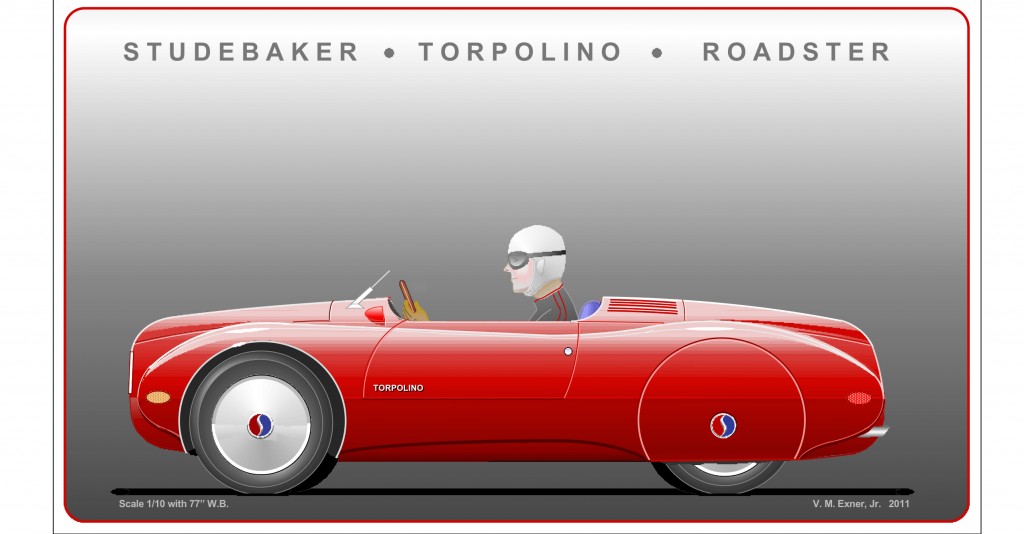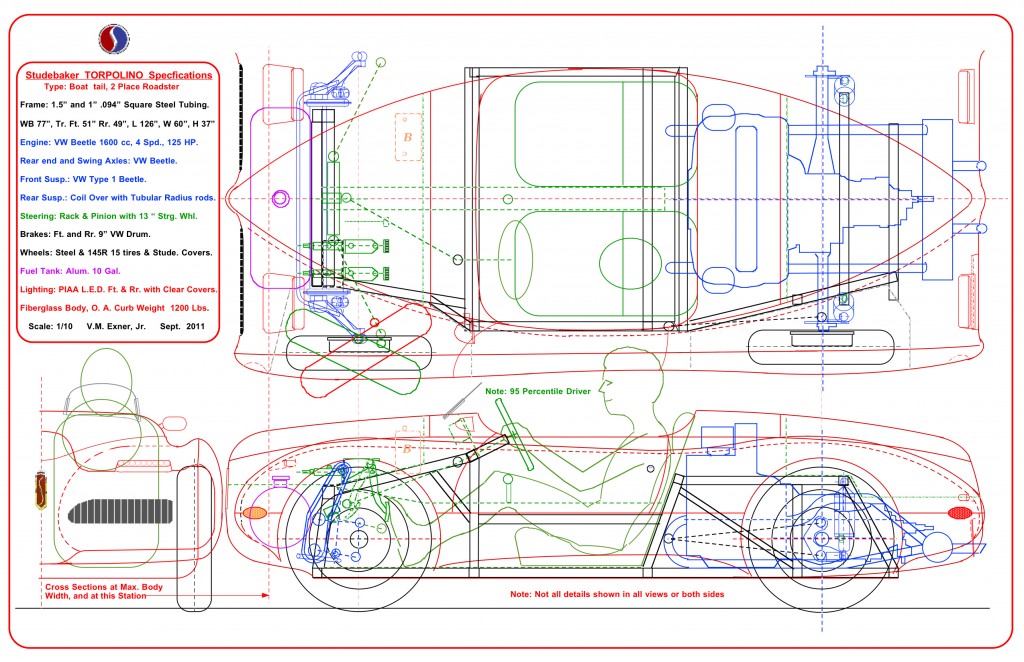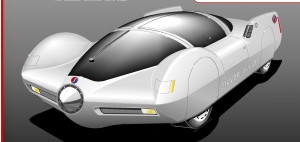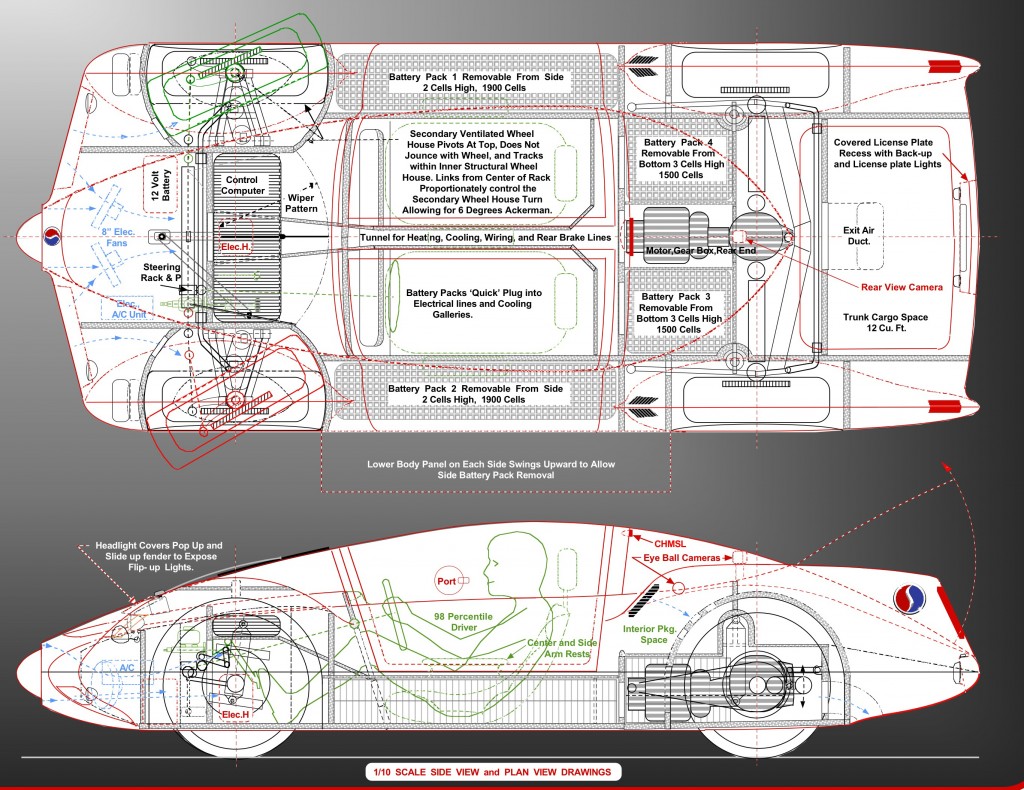Silent, swift, and sporting that familiar Civic spirit
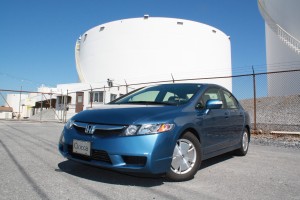
Torque. It’s the best-kept secret of automotive performance, one of the least understood and most often ignored. Horsepower gets all the glamour and attention; anyone can picture 50 or 100 or 300 galloping equines, and sum up their equivalent in power and speed. Whereas torque, which is rotational force or, that is, force times the length of a lever arm, sounds more like a lesson in physics most folks would rather skip. But trust us on this one: Torque is a Good Thing. It’s torque, not horsepower, that you feel surging at the small of your back as you squeeze down on the loud pedal.
We United-States-of-Americans have a long history of loving big-displacement eights because they deliver tons of torque—that is, forward thrust—at the relatively low engine speeds where most of our driving is actually done. We know that on a visceral level, even if we can’t tell physics from fizz, that a V8 means speed, man.
What is less widely appreciated is that electric motors deliver their maximum torque at zero rpm, declining only very gradually with increasing rotational speed. In car-speak, that means an electric boasts a flatter torque curve than any V8, V12, V16 or clichéd reference to Kansas. And gas-electric hybrids, of course, have electric motors. So the next time you hear someone complaining about the weenie performance of a hybrid, you can tell them . . . .well, you can tell they’ve never actually driven one.
Now let’s be clear: The Honda Civic Hybrid is no muscle car. But it’s plenty quick—and quickness is only one of its dozens of virtues. Like most every maximum-economy Civic since the disco-days original, this one comes with a sweet-and-smooth little 1-1/4 liter four that just loves to be wound up high where the torque lives. But the Hybrid also comes with an electric motor that starts handing out torque—whopping big raw slabs of it–the instant you dip into the accelerator.
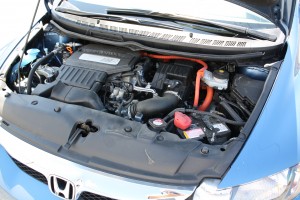
Let’s do the numbers: The Hybrid powertrain develops 123 pound-feet of torque (76 pound-feet from the electric motor alone), continuously, from a 1000rpm idle up to 2500 r’s. The standard Civic produces a marginally better 128 pound-feet, but has to wind to 4300 rpm to deliver it. Even the road-race Civic Si only rates 139 pound-feet—13 percent more than the Hybrid, but at 6100 rpm!
Put your foot down, and the Civic Hybrid delivers torque, maybe not let’s-go-pull-a-locomotive-out-of-a-ditch torque, but definitely holy-cow-we’re-bitchin’-movin’ torque. The Continuously Variable Transmission (CVT) kicks down—okay, slips down might be more descriptive–and long before the magic-magnet motor begins to fade, the little gas burner finds a groove in its variable valve timing and soars for the redline, as glass-smooth and seamless as if you’d just called down to Scotty and ordered up Warp Speed.
And now that we’ve drifted from torque to ‘Trek, we have to address the Hybrid’s two-tiered, starship-wannabe instrument panel, which is actually shared with all of the current-generation Civic models. The whole massive unit might suggest a desk more than a dashboard if not for the creative lines and textures that carve it up into more visually manageable bits, while creating the clever illusion that much of the passenger-side section is actually floating free.
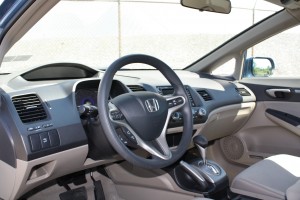
Up top and centered in the driver’s view (almost like a heads-up display, without the additional cost or complexity) is a single sweeping pod housing a large digital speedometer and, to either side of it, electronic bar-graph-style indicators for rate of fuel use and fuel remaining. (The former transforms into a water temperature gauge at the touch of a button). A second, totally separate instrument binnacle, set lower and just behind the F1-proprotioned steering wheel, houses a round anaolog tach (the vehicle’s only conventional gauge) and, to its left, color-keyed bar-graphs for volts and amps. While Toyota’s current Prius crams small and confusing graphics into a centered, monochrome and minimized slit, the Civic provides clear and colorful information that’s fun to read and interpret. If the tach is winding high relative to vehicle speed, then the CVT has clearly slid into a shorter ratio and the IC engine is working harder; similarly, the ammeter bars flash up or down to indicate whether the battery is contributing to forward thrust or busily collecting electrons for the next needed surge. We also liked the graphic gear indicator on the right side of the tach, which makes it possible to change “gear” range without ever looking down at the console-mounted vinyl mushroom that serves as a shift lever.
 Hidden all around, until they illuminate, are various warnings pertaining to the alphabet soup of anti-lock, anti-skid, and anti-leak hardware (rapidly becoming de rigueur these days) ; and some of those symbols probably will require a dip into the owner’s manual for interpretation.
Hidden all around, until they illuminate, are various warnings pertaining to the alphabet soup of anti-lock, anti-skid, and anti-leak hardware (rapidly becoming de rigueur these days) ; and some of those symbols probably will require a dip into the owner’s manual for interpretation.
So as a hybrid, the electro-combustion Civic rates four collar pips for geeky-cool. But how does it drive, as a car?
Smooth is the first word to come to mind, not a cruiser-class Detroit smooth but the more refined and controlled smoothness of a European touring car. Overall tall gearing helps; at 70 mph. the tach is barely tickling 2000 rpm. Up to three out of four cylinders can shut off when not needed, but you’ll never know when; nor will you feel them light up again the instant you need them. And for sheer lack of wind noise or driveline fuss the Civic nudges what would have been the luxury class just a few years ago. Some road noise rumbles in from below, particularly on secondary pavement, but that’s hardly surprising, given the Civic’s driving character. Like all the best Hondas we can remember over the last 30 years (and we can remember a lot of them) the Civic Hybrid stretches itself tight over the road, tensed for your next move, eager to bite into the next hapless corner and flat-out devour it–not with the hair-trigger suddenness of some half-developed “performance” package, but with the cool calculation that can only grow from a genuine reverence for vehicle dynamics.
In marketing terms, Honda has taken some real chances with the Hybrid’s tuning. That aforementioned road rumble will not endear the Civic to any long-time Toyota loyalists who wander onto the wrong dealer’s lot; nor will the Civic’s flat and neutral cornering. Honda has built a Hybrid for Honda owners, realizing full well that it’s ride and handling dynamics may actually alienate potential converts from Competitor Number 1.
Similarly, European traditionalists considering a trade-in on their high-mileage diesels will probably find the Honda’s electric power steering a touch too light. (Although it seems to firm up considerably at highway speed, and we found that the longer we drove with it, the more we liked it.) They are also among the most likely to notice the odd hiccup in the CivHy’s regenerative brakes, which manage to feel at once touchy and rubbery while emitting unhappy electric groans. Can’t argue, however, with how effectively they stop the car.
The term sports sedan is way overused anyway, and we won’t further abuse it here. The CVT dampens throttle response just enough to frustrate right-footed attempts at adjusting cornering attitude; nor does the belt-and-pulley tranny answer to sudden manual inputs with any great enthusiasm. In short, crisp downshifts are not on the menu.
The Honda Civic Hybrid is, however a true touring sedan, in which four adults can travel in long-distance comfort while the lucky nut behind the wheel remains engaged, even entertained, by the experience. While not quite as radical as the dashboard, the rest of the interior carries through a contemporary theme, with various components defined by sharp, decisive lines and angles. The seats provide that kind of firmness that’s just short of hard at the beginning of a trip and blessedly welcome several hours in. The driver’s seat adjusts for height, as does the steering column, so even though one sits fairly close to the floor it is not difficult to find a comfortable position. Side bolstering is more than adequate for the Hybrid’s cornering capabilities, without feeling confining to wide-bodied drivers. A thoughtful center armrest provides CD storage as well as a convenient place for resting arms. Two covered cupholders disappear discreetly into the center console, which also provides various small bins for sunglasses and the like.
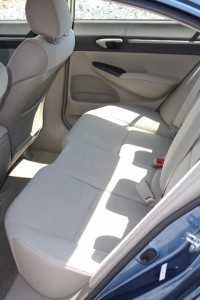
Rear seat legroom is abundant , and despite the coupe-curvy contours of the Civic’s roofline, headroom is as well. The need to put the batteries somewhere shrinks the Hybrid’s trunk from the standard Civic’s useful 12.0 cubic feet to an adequate 10.4, demanding a bit more creativity when arranging multiple pieces of hard luggage.
The controls we have not yet mentioned all function average or better-than. All Civic Hybrids come with automatic climate control, a simple and effective system operated by big, conventional buttons and knobs conveniently centered under the stereo. Our particular vehicle came with the $2,000 combination navigation/satellite radio package, but although this shares a screen with the stereo, even a Paleolithic technophobe like myself was able to dial in my favorite tribal bone-drumming. I even learned to use the navigation function without reading its separate (and intimidating) 150-page manual. And speaking of controls, a neat row of buttons across the bottom of the steering wheel rim duplicate stereo volume and stereo mode on the left, while providing complete control of cruise control on the right, including coast-down and instant cancel.
One specific detail we did not like is the short, hard, handbrake lever, which always seemed to be exactly where our right leg wished it were, particularly once we’d engaged the cruise control. Another is the mass and sheer number of roof pillars, which do occasionally interfere with the driver’s vision. And forget being able to see any of the Honda’s corners.
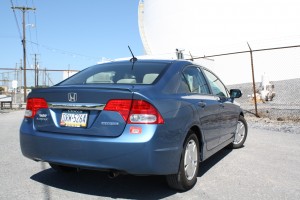
Which brings us finally to exterior styling which, of course, is always a matter of taste. We remember well the original Civic, which looked like a bigger, Asian Mini; and recall most fondly the third-generation (think mid-80s) Si hatchback, which interpreted and updated the original Mini far better than the official neo-Mini being built today. This current Civic is not only much bigger than those cars but has finally traded any trace of Mini-mimicry for a distinctly architectural look, somewhere between a lenticular-truss bridge and flying-buttress cathedral. Dominating the shape are a pair of elongated arches lofting from ahead of the front wheels to blend back into the Civic’s sophisticatedly curvy rear. The Hybrid’s only exterior distinction consists of a badge on the tail and a set of unique cast and machined aluminum wheels that tend to photograph flat but can actually look quite lovely as the natural light plays with their various surfaces.
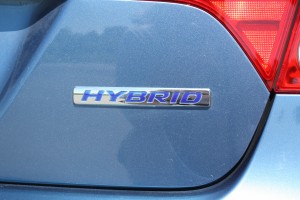
Back in the early ‘00s my daily transport was a decade-old Audi 100. It was roomy, silent, comfortable, and slow as a rock, despite an oil tanker’s appetite for Premium. Twenty years later the compact Civic Hybrid is nearly as comfortable as that full-size German luxury barge, almost as aerodynamically silent; more stable in response and handling; and significantly quicker in acceleration. And it travels literally twice as far on a gallon of gasoline, given our own real-world observation of 48 mpg average, with occasional highs of 52.
That’s not just progress, that’s the first shot of a revolution. They Honda Civic Hybrid gives us every reason to look forward to the future.
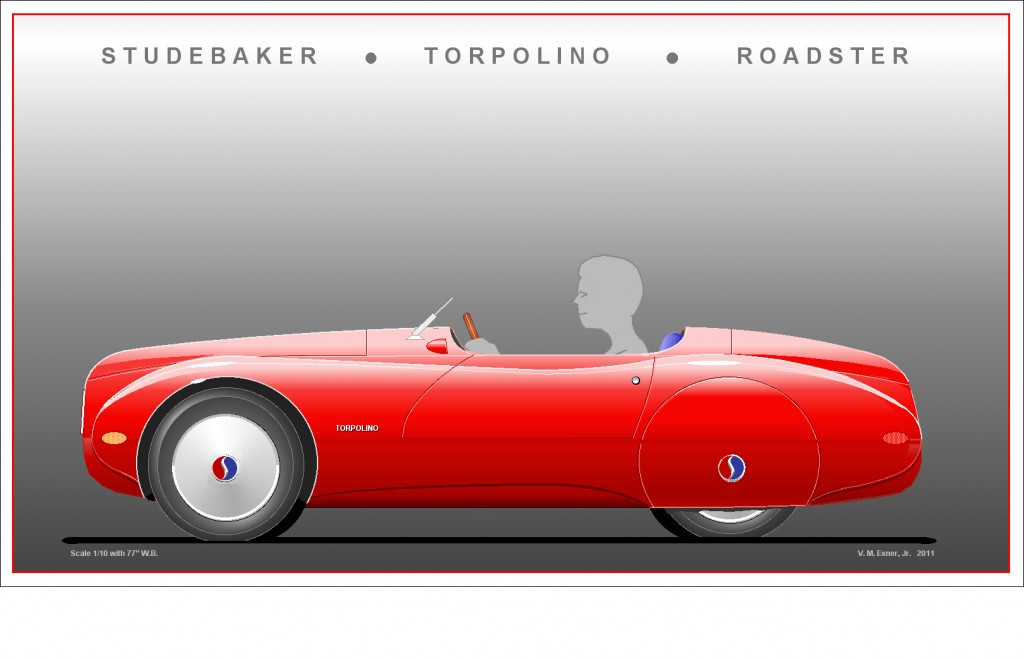
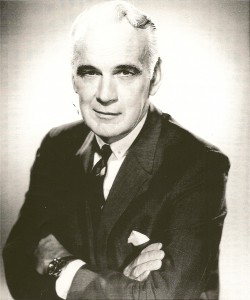 Virgil M. Exner, Sr. was surely one of the most creative and influential of all U.S. automobile designers—and the second, after Bill Mitchell, to be honored posthumously by the Henry Ford Museum’s Edsel B. Ford Design History Award. Exner’s name is not, however, often associated with small cars. Quite the opposite, “Ex” is best known for his decade at Chrysler, where, at the peak of his career, he created big, bold Hemi-powered “idea” cars in the Advanced studio–and then the “Forward Look” production vehicles whose high fins and flying-dart profiles virtually defined the latter half of the Fifties.
Virgil M. Exner, Sr. was surely one of the most creative and influential of all U.S. automobile designers—and the second, after Bill Mitchell, to be honored posthumously by the Henry Ford Museum’s Edsel B. Ford Design History Award. Exner’s name is not, however, often associated with small cars. Quite the opposite, “Ex” is best known for his decade at Chrysler, where, at the peak of his career, he created big, bold Hemi-powered “idea” cars in the Advanced studio–and then the “Forward Look” production vehicles whose high fins and flying-dart profiles virtually defined the latter half of the Fifties.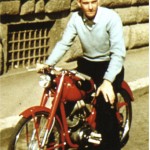 today) took a somewhat different turn. Two years before Ex Sr. wrote the critique cited above, Virgil Jr., age 11, had worked by his father’s side on the quarter-scale model that would become the production ‘47 Studebaker. A decade later Virgil Jr. collaborated
today) took a somewhat different turn. Two years before Ex Sr. wrote the critique cited above, Virgil Jr., age 11, had worked by his father’s side on the quarter-scale model that would become the production ‘47 Studebaker. A decade later Virgil Jr. collaborated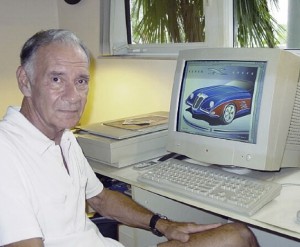 with Duncan McRae on Studebaker’s compact Lark. As a free-lancer he consulted on small-car designs for Volvo, Renault, Volkswagen, and Fiat, before winding up his professional career at Ford, where he contributed to the Maverick, Pinto, and Fiesta. Today Virgil is actively involved in the League of Retired Auto Designers (LRAD), whose 65 members continue to create new automobile designs “just for fun”; and with the Studebaker National Museum in South Bend. The latter produces an annual contest to “Design a New Studebaker,” for which Exner is a judge.
with Duncan McRae on Studebaker’s compact Lark. As a free-lancer he consulted on small-car designs for Volvo, Renault, Volkswagen, and Fiat, before winding up his professional career at Ford, where he contributed to the Maverick, Pinto, and Fiesta. Today Virgil is actively involved in the League of Retired Auto Designers (LRAD), whose 65 members continue to create new automobile designs “just for fun”; and with the Studebaker National Museum in South Bend. The latter produces an annual contest to “Design a New Studebaker,” for which Exner is a judge.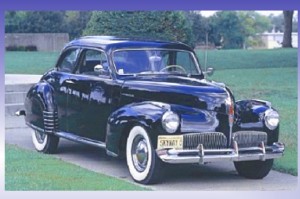 Last year, as a project separate from the contest, LRAD decided to
Last year, as a project separate from the contest, LRAD decided to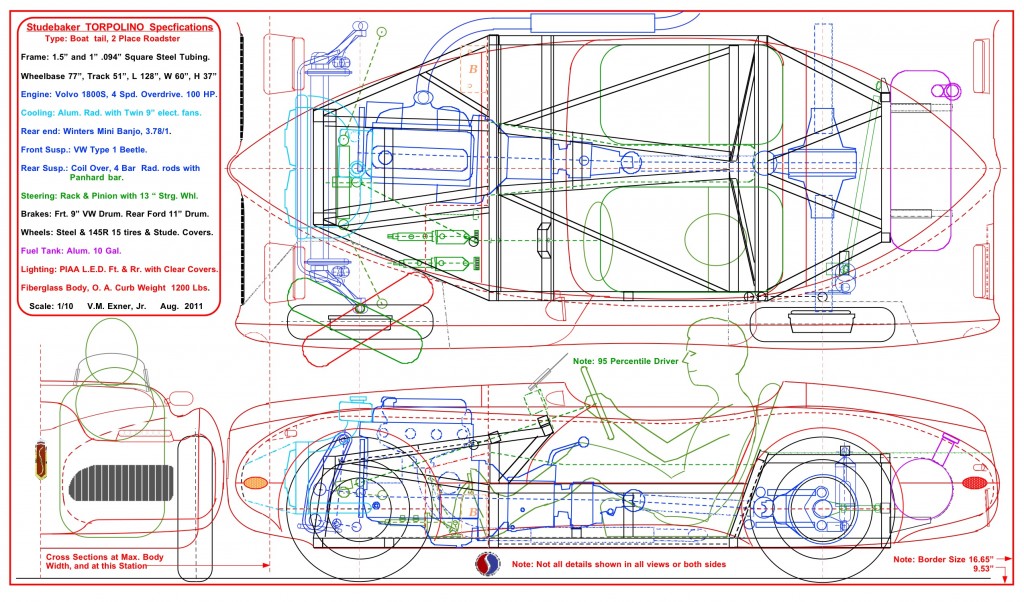 Virgil also submitted this mid-engine, VW-powered variation (below). He envisions one or both offered in kit form; we see inspiration for a modern sports roadster combining a real driving excitement with economy and style.
Virgil also submitted this mid-engine, VW-powered variation (below). He envisions one or both offered in kit form; we see inspiration for a modern sports roadster combining a real driving excitement with economy and style.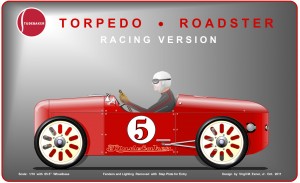 More recently, Virgil sent us several drawings of this “antique racer” (left) version of the mid-engine car. “I have a set of 5 scale rubber Firestone Balloon tires that my father had for his 1920’s Meccano set,” he wrote. “They are beautiful and in perfect condition. They are 3.5 inches in diameter, and I intend to make a 1/8 scale RC model of the ‘Antique’ using them. Then, I’ll think about the full size version.“
More recently, Virgil sent us several drawings of this “antique racer” (left) version of the mid-engine car. “I have a set of 5 scale rubber Firestone Balloon tires that my father had for his 1920’s Meccano set,” he wrote. “They are beautiful and in perfect condition. They are 3.5 inches in diameter, and I intend to make a 1/8 scale RC model of the ‘Antique’ using them. Then, I’ll think about the full size version.“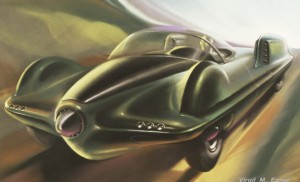 proposal for a full-electric “Silver Bullet” coupe (below); a kind of plug-in belly-tank speedster based on a rather fanciful pastel rendering done by his father in 1948 (right). The chromed “bullet nose” actually appeared on the 1950-51 production Studebaker, and although it lasted only those two years it has since become emblematic of the marque.
proposal for a full-electric “Silver Bullet” coupe (below); a kind of plug-in belly-tank speedster based on a rather fanciful pastel rendering done by his father in 1948 (right). The chromed “bullet nose” actually appeared on the 1950-51 production Studebaker, and although it lasted only those two years it has since become emblematic of the marque.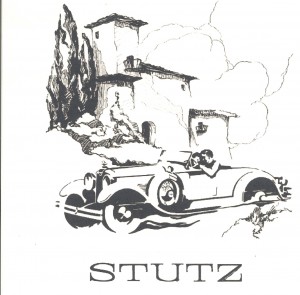 Not timely, perhaps, but remarkable for its timelessness, with just a few simple lines it expresses all the romance and passion of the autombile. Let’s never forget that.
Not timely, perhaps, but remarkable for its timelessness, with just a few simple lines it expresses all the romance and passion of the autombile. Let’s never forget that.
